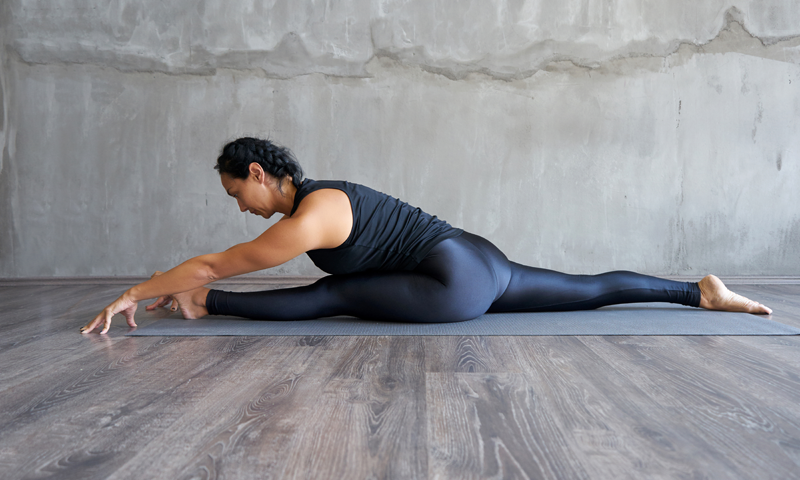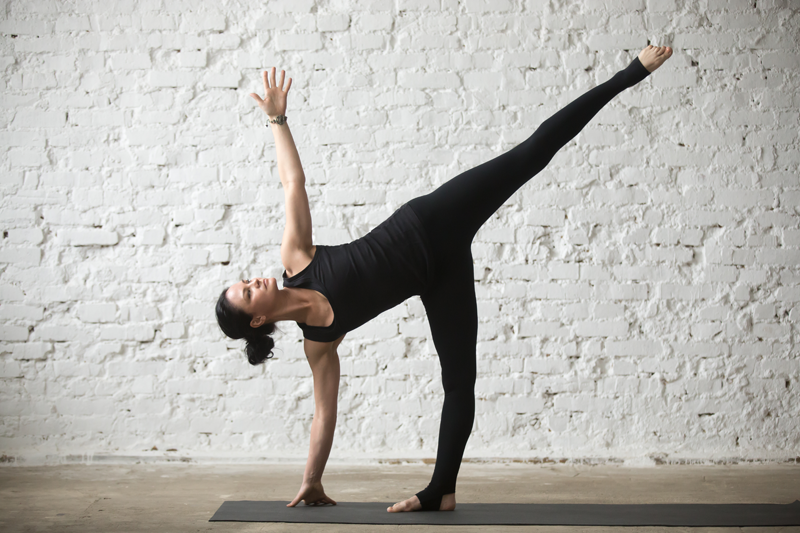
Why You Should Practice Baptiste Yoga
8th March 2018
What is Kriya Yoga?
16th March 2018Definitive Guide to Kripalu Yoga

Like many yoga forms, Kripalu Yoga is based upon traditional Hatha sequences. The practice incorporates breathing exercises, physical poses, and also meditation; unlike many other forms, Kripalu treats all three areas with an equal importance. Kripalu teaches practitioners that their body is the centre of their being. With this in mind, instructors advise their students to listen and learn from their own body and to accept their body as their finest teacher. Focussing on the mind, body, and spirit, Kripalu Yoga is ideal for those hoping to explore all of the traditional yogic elements. Many yogis suggest that the benefits of Kripalu go way past the mat. A source of spiritual and mental transformation, the practice is great to implement into your daily life. Better still, it is adaptable and simple to pick up, making it suitable for practitioners of all sorts. In this article, we explore Kripalu Yoga in more detail. If you’re interested in getting involved, it’s worth picking up a pair of flexible yoga pants to allow your body to stretch properly as you practice.
Philosophy
Like all yoga styles, Kripalu Yoga has its own philosophy. Found in the Kripalu Yoga Teacher Training Manual, the philosophy of the practice is as follows:
‘The goal of traditional yoga is to bring a practitioner to the highest spiritual state called self-realisation. The goal of Kripalu yoga is to develop a healthy and strong body, an open and caring heart, and a peaceful and clear mind. Kripalu Yoga recognises that we are born divine and are inherently capable of accessing our spiritual nature.’
History and Origins
Kripalu Yoga first came about in the 1980’s, founded by a man named Amrit Desai. Desai is believed to have named the practice after his first yoga teacher, Sri Kripalvananda. When translated from Hindi, the word ‘Kripalu’ means ‘compassion’, so this could be another reason behind the name of the practice. In most yoga classes, practitioners will end the session with the word ‘Namaste’, which means ‘I thank you’; however, Kripalu classes end with the phrase ‘Jai Bhagwan’, instead. This phrase also means ‘I thank you’, but is the Hindi translation rather than the Sanskrit. The original centre of Kripalu Yoga can be found in Massachusetts, though the style can now be learnt in various locations worldwide.

Practice
Today, Kripalu Yoga classes can be found in almost every major city in the world. Though each class is unique, most sessions tend to follow the same basic structure. Typically, students will begin by looking inward to find their own level of practice. Once everybody is ready, the instructor will usually lead a series of breathing exercises, or ‘pranayamas’ as they are referred to in Sanskrit. Next, practitioners will warm up with some gentle stretches before performing a sequence of physical postures, or ‘asanas’. Most sessions will finish with a few minutes of meditation to warm down and relax before leaving the studio. Most yoga studios will hold separate classes for beginners and experienced yogis. In beginner classes, the poses are usually held for a shorter duration. This allows the muscles to stretch gradually and prevents unnecessary injuries from occurring. In the higher-level sessions, practitioners are encouraged to flow their asanas into one another for best results. The adaptable nature of the style makes Kripalu suitable for all abilities. Additionally, the practice can be adapted for those with physical injuries or limitations.
Benefits
When practised regularly, Kripalu Yoga can have a range of great benefits – both physically and emotionally. Many yogis report that the practice improves their self-confidence, reminding them that they can achieve anything if they put their mind to it. The self-empowering nature of Kripalu is what makes the style so transformative. As the practice can be tailored to suit physical limitations, Kripalu can even be used to aid recovery after injury.
Kripalu Yoga is an ideal way to evolve the mind, body, and spirit. Regular practice of the style will encourage you to become more conscious of the way you treat yourself and others and help you learn how to live in harmony with those around you. Kripalu has all the physical benefits of yoga, along with additional emotional and spiritual benefits, also. The best thing about the practice is that it can empower your life both on and off the mat. While the asanas are great for your physical health, the benefits of the practice will begin to seep into your everyday life, too.
Another great thing about Kripalu is that it can be practised anywhere. Some yogis may choose to venture to the original centre in Massachusetts, but great Kripalu classes can be found all around the world. It will just take a quick google search to find the Kripalu classes near you. Alternatively, the style can be practised from the comfort of your own home using online classes.
In Summary
Working both physically and spiritually to improve your health and well-being, Kripalu Yoga is ideal for those suffering from fatigue, anxiety, and even depression. Whether you are hoping to use the practice to tone your physical body or you’re more interested in learning how to meditate, practice Kripalu Yoga regularly to reap the benefits. Though the style is easy to pick up, beginners may benefit from attending a local class before practising Kripalu alone. Here, an experienced instructor can advise you on the best pranayamas, asanas, and meditation techniques to use, allowing you to gain maximum benefit from the style. When attending a local class, it’s a good idea to go equipped with your own gear. For easy transportation, it may be worth picking up a spacious yoga bag to use to and from your sessions.

